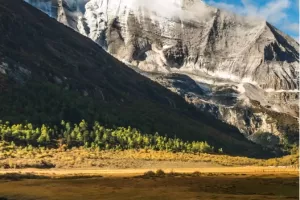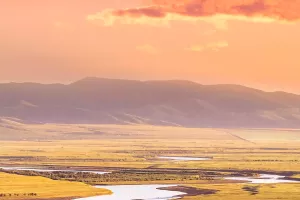The surface area of our blue planet is about 510 million square kilometers. About 71% of the surface is ocean, and the other 29% is several continents. Specifically, it is divided into seven continents, namely Asia, Europe, North America, South America, Antarctica, Africa and Oceania.
Although each continent has a different geographical structure and complex and diverse topography, there are basically five basic geographical topographies of mountains, plains, basins, plateaus and hills. Among them, mountains account for about 31% of the total land area. Mountains generally refer to highlands above 500 meters above sea level, and the fluctuations are relatively large. So, what are the highest peaks on each of the seven continents?
The highest peak in South America is Aconcagua, located at the northwestern tip of the Mendoza province on the border between Argentina and Chile, with an altitude of 6,962 meters. Compared with Mount Everest, Aconcagua is easier to climb. The Englishman Edward Fitzgerald led the Swiss mountaineering team to the summit in 1897. Now more than 3,000 mountaineering enthusiasts come here every year, and 70% of them can successfully reach the top.
The highest peak in North America is Mount McKinley, located in the south-central part of Alaska, USA, with an altitude of 6193 meters, which belongs to the middle section of the Alaska Mountains. McKinley Peak is steep and difficult to climb. Many people have tried many times without success. It was not until 1913 that Walter, an American from Alaska, successfully reached the top. It is now the second largest national park in the United States after Yellowstone, and it is also a summer resort.
The highest peak in Europe is Mount Elbrus. The snow line of Mount Elbrus is 3200 meters above sea level on the north slope and 3500 meters on the south slope. There are 77 large and small glaciers around, with a total area of 140 square kilometers. Glaciers melted water and formed many rivers around. After the winter, the depth of snow above the snow line is usually 30-60 cm, sometimes reaching 3 meters.
The highest mountain in Africa is Mount Kilimanjaro, located in northeastern Tanzania and about 160 kilometers south of the Great Rift Valley. It is the highest mountain in Africa and a volcano. The main body of the mountain extends for nearly 80 kilometers along the east-west direction and is mainly composed of three extinct volcanoes, Uhuru, Mawenxi and Shila, with an area of 756 square kilometers. Kilimanjaro is known as the "Roof of Africa", and many geographers call it the "King of Africa".
The highest peak in Asia is the well-known Mount Everest, with a height of 8844.43 meters, which is the highest peak in the world. The summit is located on the border between China and Nepal. The mountain is in the shape of a giant pyramid, and there are huge glaciers on the mountain, up to 26 kilometers long.
The highest peak in Antarctica is Mount Vincent, 4897 meters above sea level. Vinson Peak is located at 78°35' south latitude and 85°25' west longitude in West Antarctica and is the main peak of the Elworth Mountains in Antarctica. Although the height of Mount Vincent is not high, it is the last mountain to be summited among the highest peaks on the seven continents. It requires climbers to have enough experience to deal with extreme low temperatures, high winds and high altitudes.
The highest peak in Oceania is Mount Jaya at 4,884 meters above sea level, located on Sudirman Island on the west side of New Guinea, Indonesia, and is the highest peak in Oceania. Since this closed mountain is not open to the public, people know more about its situation from rumors. The difficulty of climbing is mainly due to the sharp rocks on the mountain, especially a 20-meter-deep crack and a straight wall more than 50 meters long, with a climbing difficulty factor of 5.9.


